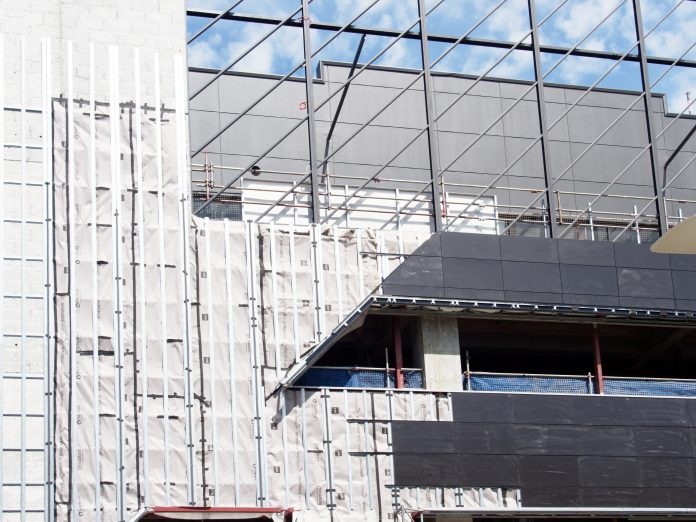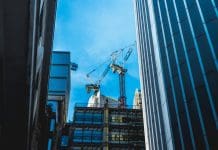The UK has delivered long-awaited changes to combustible cladding criteria on major property developments, five years after the Grenfell Tower tragedy. But updating the law to enable safer cladding regulations is just the tip of the iceberg, Elecosoft explains
On 1st December 2022, UK building regulations governing tower block cladding will change – almost 2,000 days after London’s devastating Grenfell Tower fire.
The use of metal composite material (MCM) panels with an unmodified polyethylene (PE) core will be outlawed on the external walls of residential buildings taller than 18 metres, hotels, hostels and boarding houses. It has already been banned in new hospital developments, boarding school dormitories, and university halls of residence.
While this is a welcome safety improvement to cladding regulations, updating the law may not prevent a similar future disaster. The severity of the Grenfell Tower fire was caused by a combination of unsuitable materials and miscommunication – and the construction industry needs to tackle both these problems to ensure real change.
Material specification is construction’s blind spot
Construction companies are well-accustomed to regulation changes, and many are finding more efficient ways to incorporate new practices into project planning and execution. After a slow start to digitalisation, 73% of the industry is now using BIM technology to manage construction work and deliver more projects on time and within budget.
Yet very few companies are using their BIM software to manage material specification, unless the customer has specifically requested it. And this creates vulnerabilities in the construction process.
There is no current legal requirement to keep a record of materials used in new developments
Currently, there is no legal requirement to keep a permanent record of materials used in new developments. Property owners trust contractors to keep pace with regulatory requirements and use materials that are fit for purpose.
As pressure mounts for construction companies to become more accountable for material decisions, extending the use of BIM technology to include specs and standards software is a logical next step.
In addition to providing a digital audit trail proving properties are constructed with legally compliant materials, it also creates a ‘corporate memory bank’. Property managers can access data to replace elements like-for-like, ensuring health and safety protocol is followed once construction is complete.
Clearer information sharing can save lives
Investing in material specification tracking will also enable construction companies to keep pace with further legislation coming into force.
While the cladding ban has captured headlines, the latest building regulation update includes other significant changes that strengthen the case for data transparency and information sharing.
For example, from December, all buildings over 11 metres tall will require a secure information box to be installed on-site, providing essential information for fire and rescue services in an emergency.
This update directly responds to Grenfell Tower, as experts believe that spraying water on the building caused a chemical reaction between its insulating foam and aluminium cladding, accelerating the fire’s spread.
At the moment, many property owners don’t have detailed, trustworthy data on the buildings in their care. And those that do can’t always access that data easily. Centralising building information will enable construction companies and property developers to work together in establishing formal fire safety policies and procedures, which ensure correct protocol is followed.
Cataloguing material decisions will speed up sector responses
The latest regulation updates are a significant milestone for building safety. Still, construction companies must remember that outlawing MCM PE panels in future developments won’t draw a line under the issue.
Despite government intervention and funding, over 100 high-rise buildings with the same aluminium composite material panels as Grenfell Tower are yet to have their cladding removed. And this raises further questions about accountability in the construction industry.
Most developers and contractors make choices in good faith, selecting materials that meet industry guidelines at the time. But what happens if those materials fall out of compliance and need replacing?
As the Grenfell Tower response has shown, with no central data repository, identifying at-risk buildings and planning upgrade work is both costly and time-consuming. It can also lead to further incidents: student accommodation in Bolton was destroyed by fire in 2019, with witnesses claiming flames were “crawling up the cladding like it was nothing”. Thankfully there were no casualties.
If construction companies are using BIM software to catalogue material decisions, they can immediately create a complete list of required work – notifying building owners affected and offering to carry out the changes as quickly as possible.
Construction companies continue driving safety standards
The Grenfell Tower tragedy was a wake-up call to the construction industry. Every stakeholder is accountable for project decisions, and property developers, contractors and building owners must collaborate closely to ensure safety standards continue to rise.
Putting long-term digital processes in place for monitoring and resolving material issues will make this process quicker and simpler to execute. And from a commercial standpoint, it will help construction companies to deepen trust with their customers.
For building regulation updates to drive real change, material specification management must be more than a nice-to-have. It must become an essential tool for constructing safer buildings. Construction companies that invest in software now will give themselves a marketable advantage that clinches deals with increasingly safety-conscious prospects.
Powerproject by Elecosoft is an intuitive scheduling technology with 4D BIM integration to increase the visibility and accountability of construction planning and execution. Our software provides a secure digital record of every project decision to support buildings constructed to the highest safety specifications.














